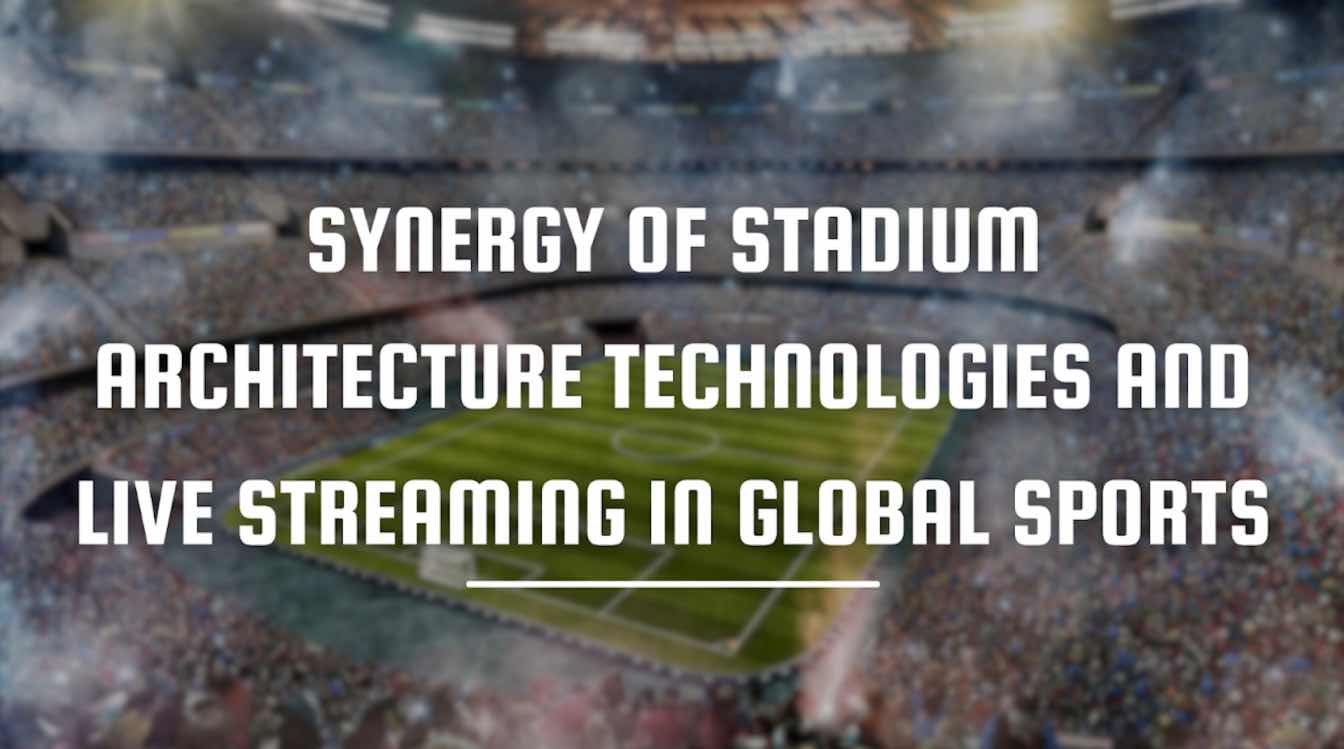There has been colossal advancement made by architects creating world-class sports stadiums. Modern stadiums push the boundaries so every spectator can watch the sporting event and be immersed in the action. There are no bad seats in the house anymore. Nowadays, stadiums use audiovisual systems and LED displays to enhance every fan's experience.
There has been an integration of virtual reality technologies. By using VR-enhanced smartphone apps or VR headsets, fans can access stats, replays, and exclusive content. All of this creates a more personalised and interactive experience for non-UK sports wagering on sports events.
The Evolution of Stadium Architecture
Through technological advancements, stadium architecture is focused on bringing spectators a more immersive experience. They use sustainable features and audiovisual systems, which add another dimension to the sporting event. Modern stadiums are focused on innovative designs that shape the future of sports globally.
Historical Overview
Looking back to Roman and Greek times, they constructed amphitheatres and collisions for athletic events and gladiator contests. These types of structures had tiered seating, which catered for large crowds of people. In the 20th century, more elaborate stadiums were constructed. These stadiums featured steel and reinforced concrete. These stadiums allowed for larger crowds and a bigger circumference.
Two good examples of these stadiums would be New York City's Polo Grounds and the Rose Bowl in Pasadena, California. Nowadays, there is a focus on sustainability and environmentally friendly construction. A fine example is the Allianz Arena in Munich and the Aviva Stadium in Dublin.
Modern Technologies
Nowadays, in stadium design, green building techniques are used, which means sustainable transport solutions are used. You can expect bike lanes, electric vehicle charging points, and improved public transportation. Augmented reality and virtual reality are helping transform how fans interact at sporting events. AR apps allow spectators to receive player information, real-time stats, and interactive content over their smartphone screens. There are also HD displays with immersive audio systems, which create an excellent experience for fans. Fans can watch replays and highlights throughout the game on large screens around the stadium.
Stadiums also feature IoT (Internet of Things), which means sensors are fitted to take the temperature, crowd density, and air quality. This information helps optimise operations and improve safety and comfort. Smart lighting systems help create a better atmosphere while reducing energy consumption. With all these advancements, stadiums around the globe are setting a high bar. All these features help spectators have an experience they will never forget.
The Rise of Live Streaming
Live streaming has helped transform the way live sports and entertainment are consumed. There is no easier and more convenient method to watch your favourite sports team or entertainment show online. As long as you have an internet connection, you can access live streams whenever you desire.
Growth of Live Streaming
Thanks to live streaming, watching your favourite sports online without having to watch a TV is possible. The days of relying solely on a TV broadcast are over. Instead, you are now able to access live streams through online platforms. You can watch these through social media platforms, official team websites, or dedicated sports streaming sites. It has never been easier to follow your beloved sports team online.
Live sports streaming has helped fuel online betting expansion. Through these platforms, you can get real-time odds and in-play betting options and participate in interactive betting experiences. Through live streaming, bettors can watch the action unfold and make informed betting decisions. Undoubtedly, live sports streaming has added to the growth of online betting platforms.
Enhancing Fan Experience
Live streams of sporting events have led to more accessibility for fans worldwide. There is no requirement to rely on a TV broadcast to watch events now; it is just an internet connection. The convenience of watching a live stream from the comfort of your digital device is brilliant. Using a smartphone, tablet or laptop to watch events wherever you desire is possible.
You can even get real-time updates and insights into different sports events. Viewers can access player performance stats and commentary, which adds to the overall enjoyment. Let’s not forget about the flexibility that live streams offer. It is possible to choose different camera angles, watch replays, pause and rewind the action. The flexibility allows fans to watch when and how they like.
Synergy Between Architecture and Streaming
There is great synergy between architecture and streaming in today's world. Nowadays, the sports viewing experience combines innovative design and digital connectivity. This creates a wonderful blend of immersive environments for live spectators and the remote audience.
Seamless Integration
There is a great integration of technologies nowadays, which enhances the sports viewing experience for fans. Many stadiums incorporate audiovisual systems and digital displays into designs. You will find high-definition LED video screens throughout a modern stadium. This gives fans a clear view of the action and replays for those who missed the live action.
Stadiums are also fitted with Wi-Fi capabilities to support live streaming. This allows fans to stream live action and share their experiences through social media in real-time. Because of these capabilities, stadiums cater to a more interactive and immersive audience. With these technologies in use, stadiums are revolutionising the sports viewing experience. Stadiums can cater to modern sports fans with digital connectivity and interactive engagement.
Immersive Viewing Experience
One way modern stadiums create an immersive experience for their spectators is through the high-definition screens around the stadium. These modern stadiums are fitted with innovative lighting and surround sound systems, which help capture the excitement and energy of a live event. Multiple camera angles and visual effects enhance the immersive experience for remote audiences. Through live streaming sites, watching from different camera angles and personalising your viewing experience is possible. There is also live commentary on live streams, interactive polls, and social media integration.
This allows remote audiences to feel part of a community despite being separated. Let's not forget about the use of virtual reality, which takes immersion to another level. VR headsets allow fans to experience the 3D effects of being inside a stadium. There is great synergy between architecture and live streaming technology. Dynamic camera angles, audiovisual systems, interactivity, and VR all blur the lines between being present at an event and sitting at home. This type of integration allows fans from around the globe to engage in a memorable experience, whether they are present or not.
Conclusion
Nowadays, the stadium experience is like no other. Spectators can experience a truly immersive viewing experience either at the stadium or at home. The fusion between architecture and live streaming technology is a giant leap forward. This relationship enhances accessibility and engagement. As technology evolves, there will be even greater levels of immersion and connectivity. It will not matter where you are; you will get an unforgettable sporting experience.





